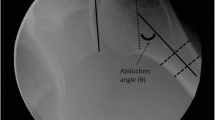Abstract
It seems likely that the tightness of tissue influences a patient's disposition to disc hernia. The aim of this study was to compare the mechanical behaviour of tissue from disc hernia patients with that of controls. A computerized finger hyperextensometer was constructed, which allowed the measurement of the viscoelastic properties of the capsule and ligaments at the metacarpophalangeal (MCP) joint. The disc group showed a reduced maximal extension angle of MCP joint II (P < 0.01), reduced tissue recovery value (P < 0.05), reduced relative subsecant area (P < 0.01) and relative integral of the regression curve (P < 0.01). The results indicate that an anulus fibrosus with reduced extension properties, reduced capacity of energy absorption and retarded shape recovery disposes to rupture.
Similar content being viewed by others
References
American Academy of Orthopedic Surgeons (1965) Joint motion: method of measuring and recording. Churchill Livingstone, Edinburgh
Arnold G, Clahsen H, Schwinger G (1982) Die experimentelle Untersuchung mechanischer Eigenschaften von Körpergeweben mit biomechanischen Verfahren. GIT Lab Med 5:183–193
Beighton P, Solomon L, Soskolne C (1973) Articular mobility in an African population. Ann Rheum Dis 40:209–212
Beighton P, Grahame R, Bird H (1984) Bandlaxität: Meßmethoden und Epidemiologie. Orthopäde 13:19–24
Brinckmann P, Grootenboer H (1991) Change of disc height, radial disc bulge, and intradiscal pressure from discectomy. An in vivo investigation on human lumbar discs. Spine 16:641–646
Carter C, Wilkinson J (1964) Persistent joint laxity and congenital dislocation of the hip. J Bone Joint Surg [Br] 46:40–45
Dubs L, Gschwend N, Sonney F (1984) Die Messung der Bandlaxität beim Gesunden. Orthopäde 13:25–30
Grahame R, Jenkins JM (1972) Joint hypermobility — asset of liability. Ann Rheum Dis 31:109–111
Jobbins B, Bird H, Wright V (1979) A joint hyperextensometer for the quantification of joint laxity. N Engl J Med 8:103–105
Kitano T, Zerwekh JE, Usui Y, Edwards ML, Flicker PL, Mooney V (1993) Biochemical changes associated with the symptomatic human intervertebral disk. Clin Orthop 293:372–377
Weh L, Petau C (1984) Diskusprolaps und konstitutionelle Bandfestigkeit. Z Orthop 132:312–315
Weh L, Augustin A (1992) Der Einflufß der konstitutionellen Bandlaxität und der körperlichen Belastung auf die Entstehung des Patellaspitzensyndroms. Z Orthop 130:213–217
Author information
Authors and Affiliations
Rights and permissions
About this article
Cite this article
Weh, L., Petau, C. Tissue tightness disposes to disc hernia. Arch Orthop Trauma Surg 114, 97–99 (1995). https://doi.org/10.1007/BF00422834
Received:
Issue Date:
DOI: https://doi.org/10.1007/BF00422834




